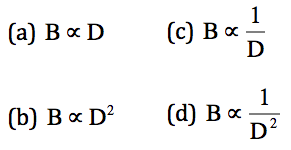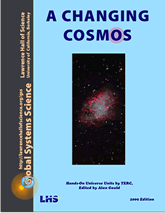AC4.3. A Law of Brightness
A basic physics lab activity using a light sensor to measure brightness of light source(s) at various distances.
Materials:
- Computer light sensor or
- Photo cell and ohmmeter
- Light bulb(s)
- Meter stick
What to do:
- Hook the photocell to the ohmmeter, and check that the reading on the ohmmeter changes as light to the cell changes (you can do this by turning off the lights or by shielding the cell with your hand).
- Place a lit light bulb in an otherwise darkened room. It is important not to have any background light behind the light bulb or objects obstructing light from the light bulb.
- Hold the light sensor or photocell one meter away from the light bulb and take a reading of brightness from the light.
4.7. Record your light brightness reading, and then before taking additional readings at new distances, make predictions for what you would expect at two and three meters. Take readings at two and three meters, record your data, and compare these with your predictions.
• Gather and record data for five additional distances.
4.8. Plot your data (there should be at least eight points) on a graph with distance on the horizontal axis and light reading on the vertical axis. Draw a smooth curve that approximately connects the points.
4.9. On the basis of your graph, which of the following relationships between brightness, B, and distance, D, can you rule out?

Which function most matches this curve ?
4.10. Square each of your distance measurements. Plot light reading vs. distance squared. Draw a straight line through the points on the graph.
A. What is the slope of this line?
B. What is the math function for the light reading in terms of the distance?


